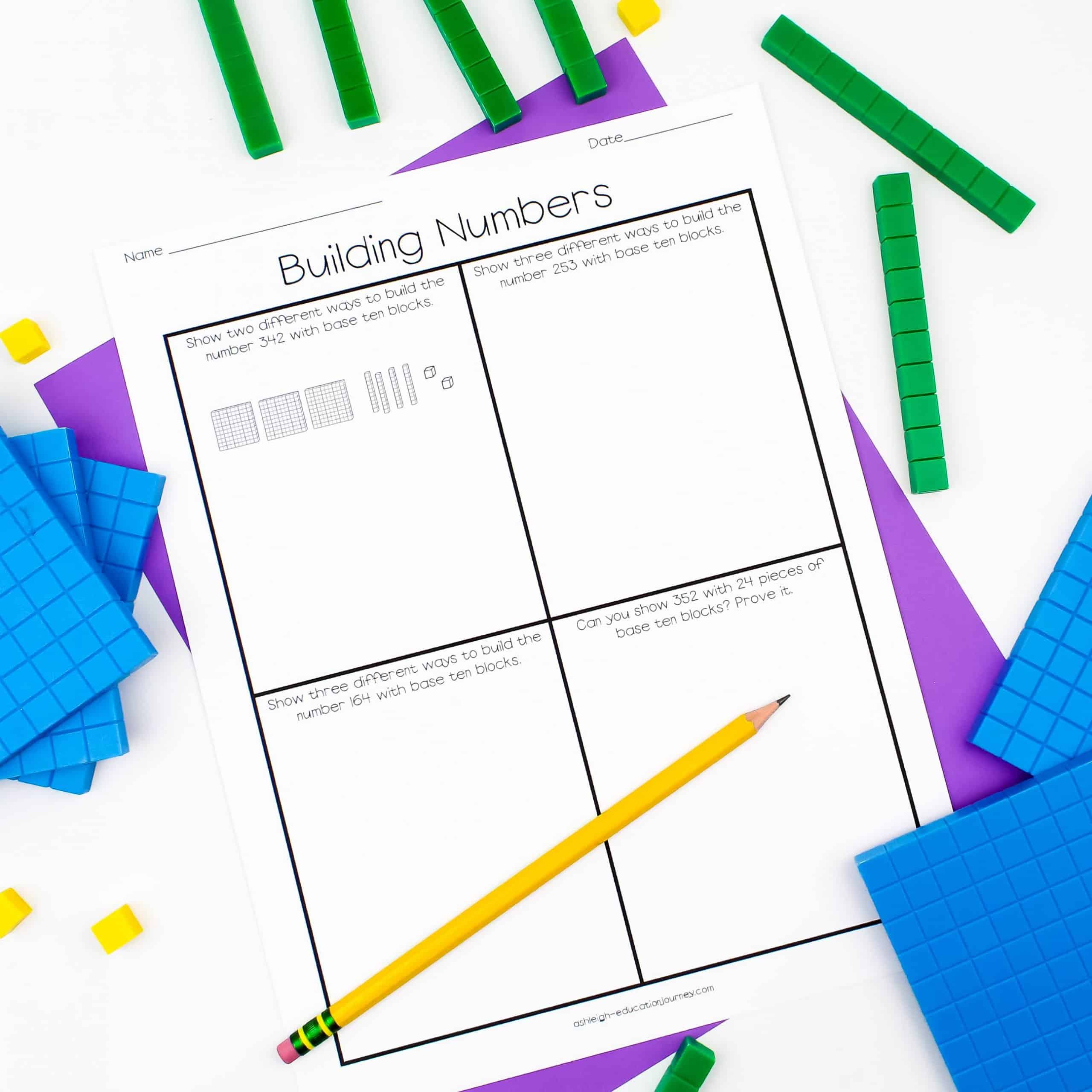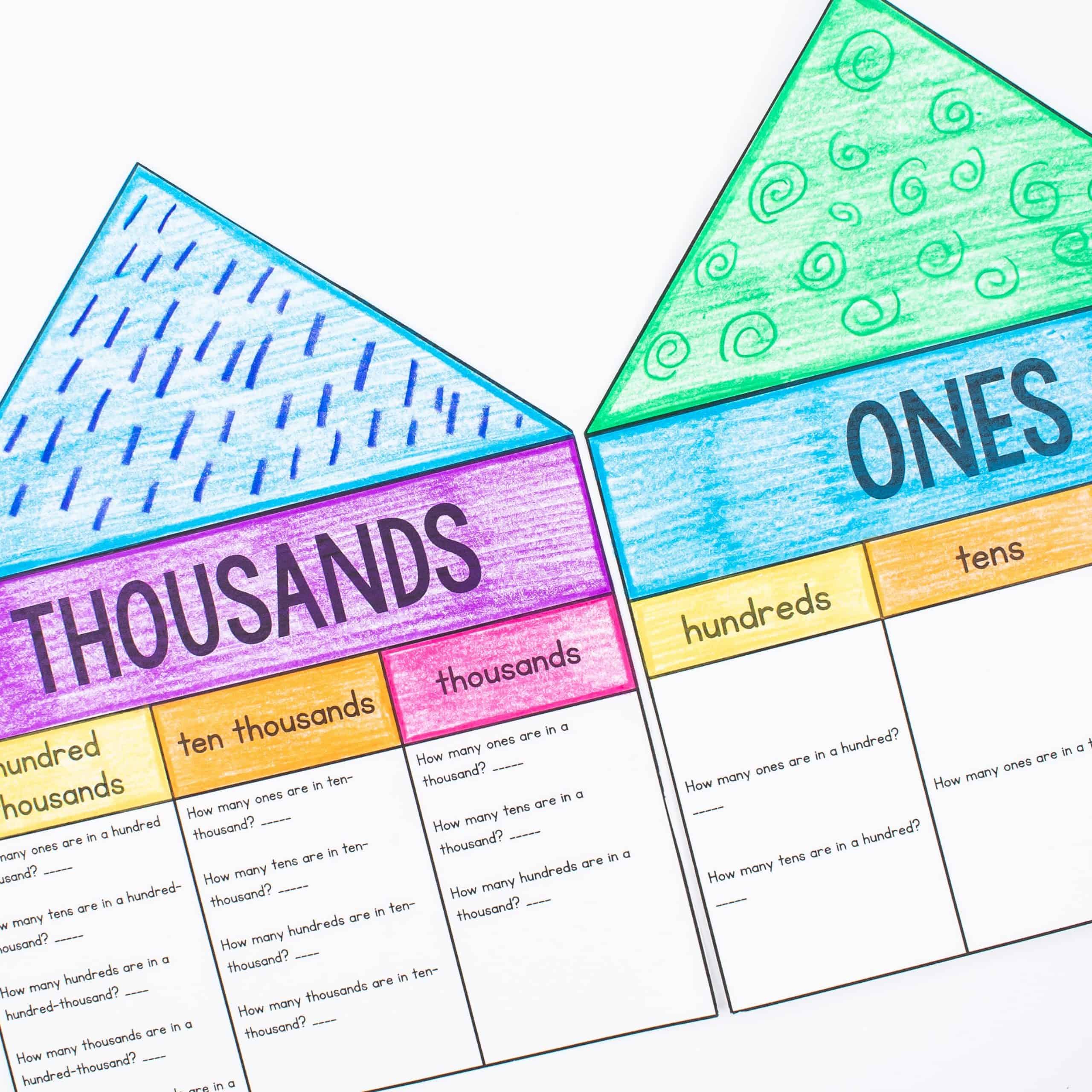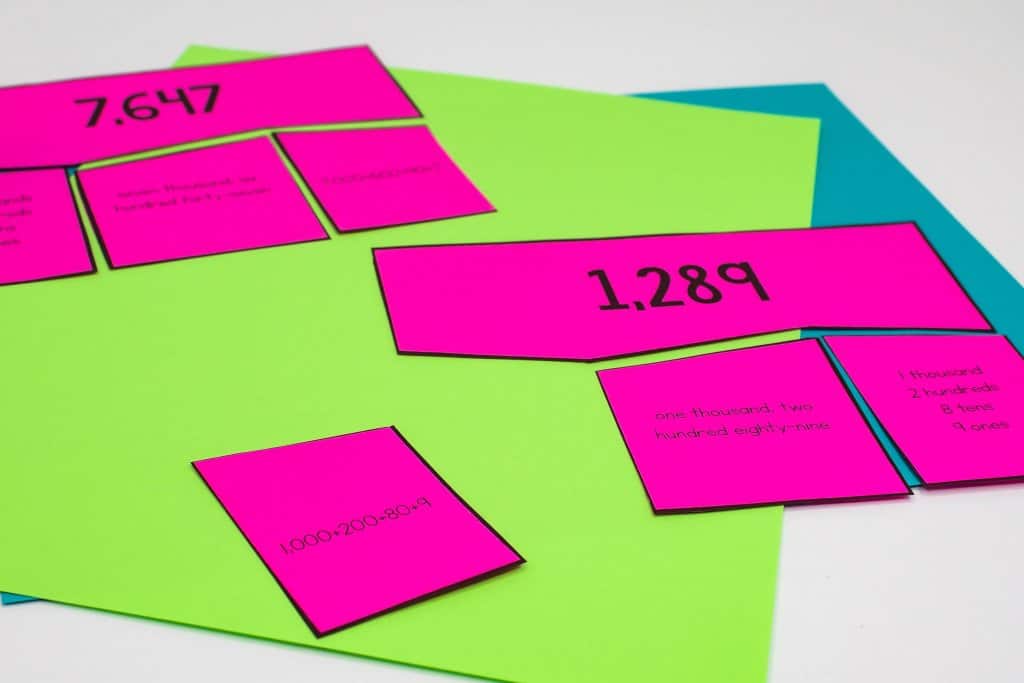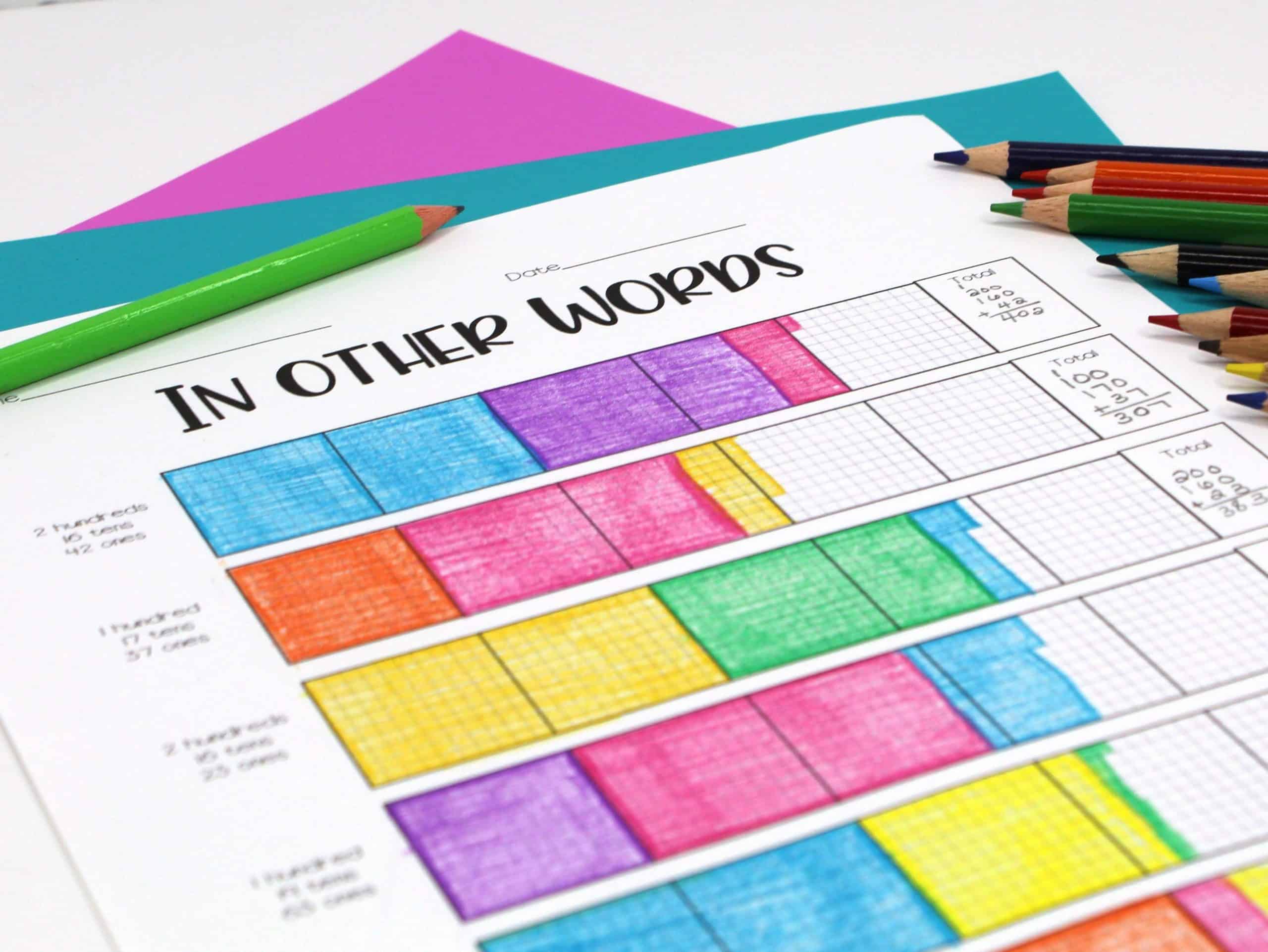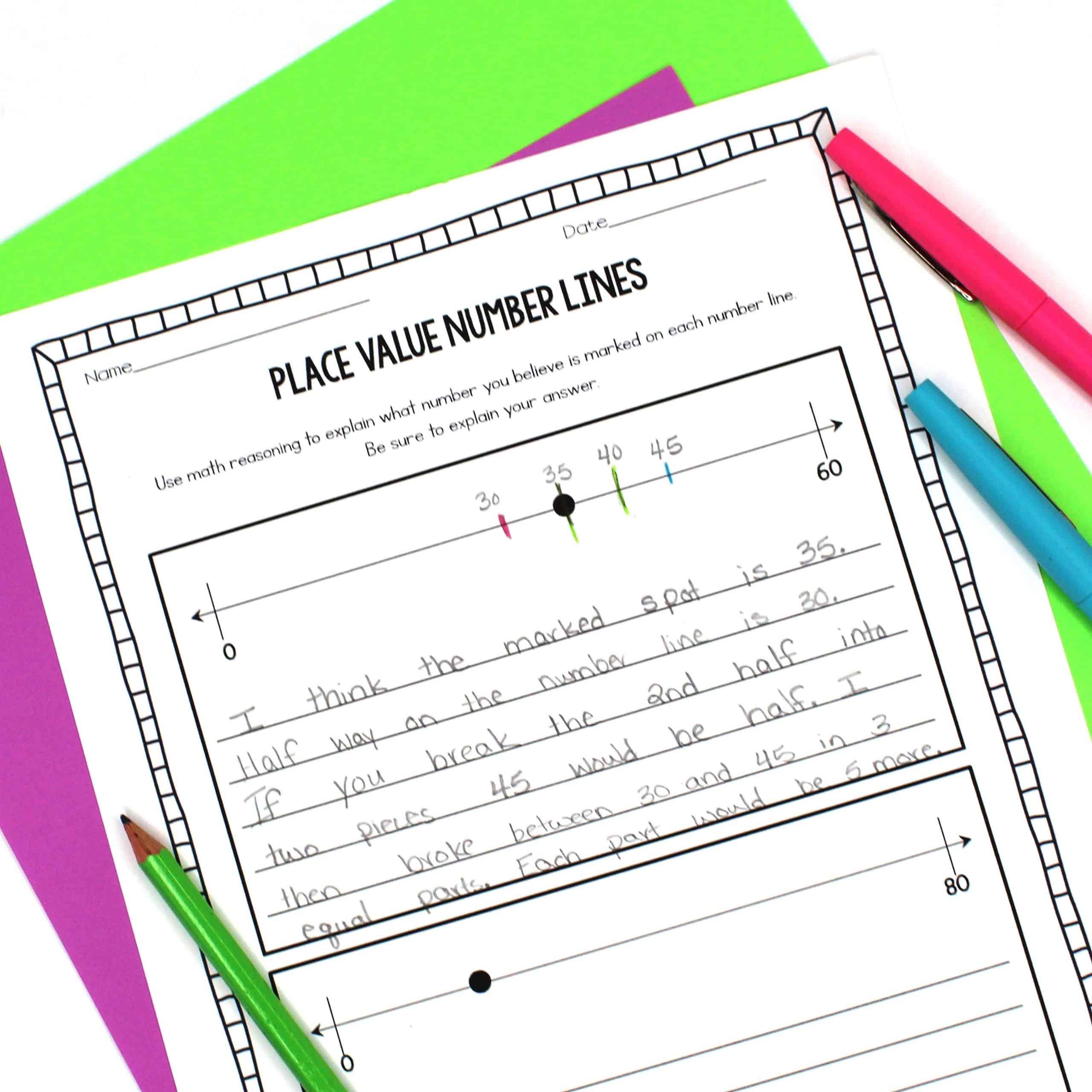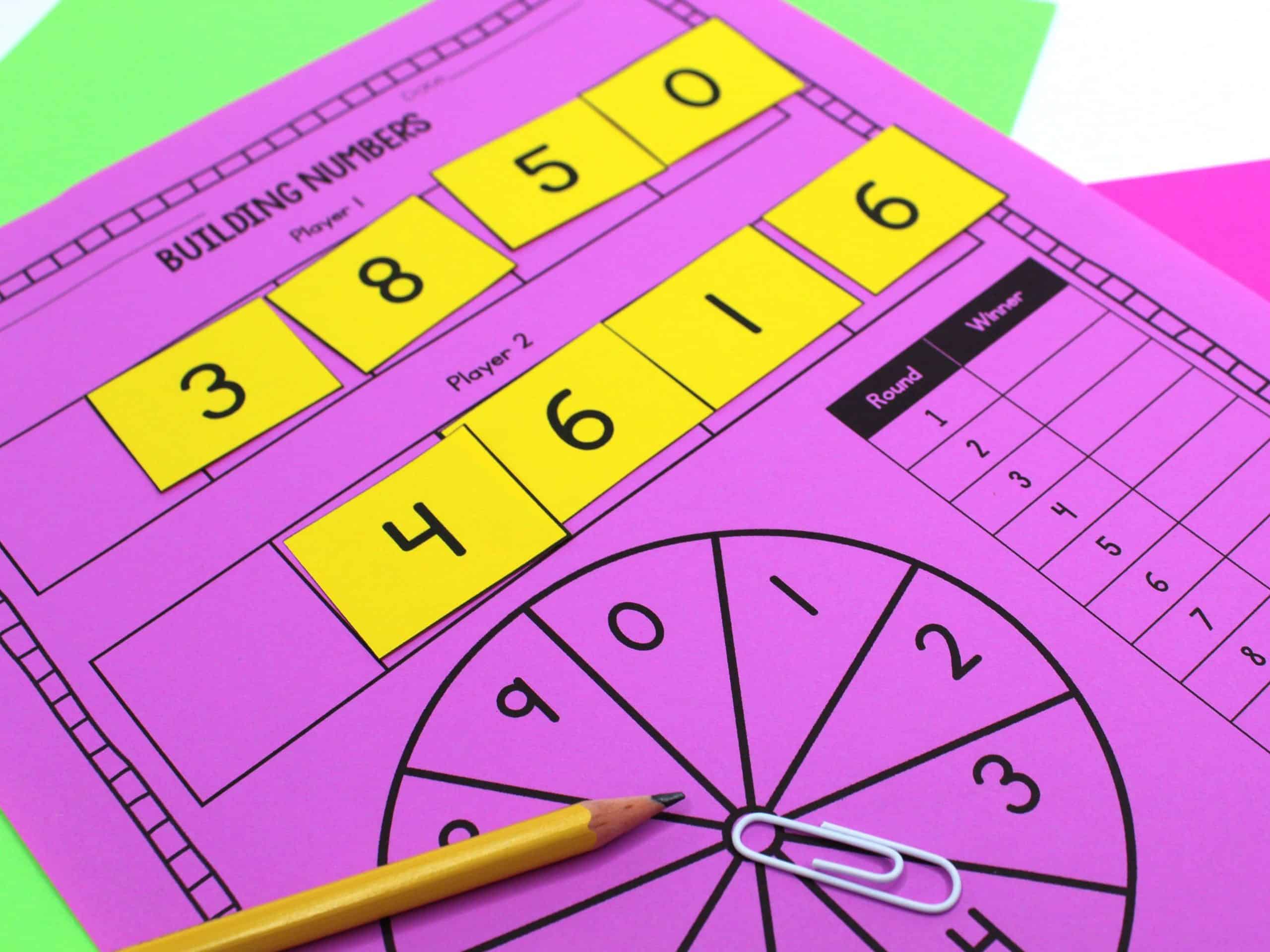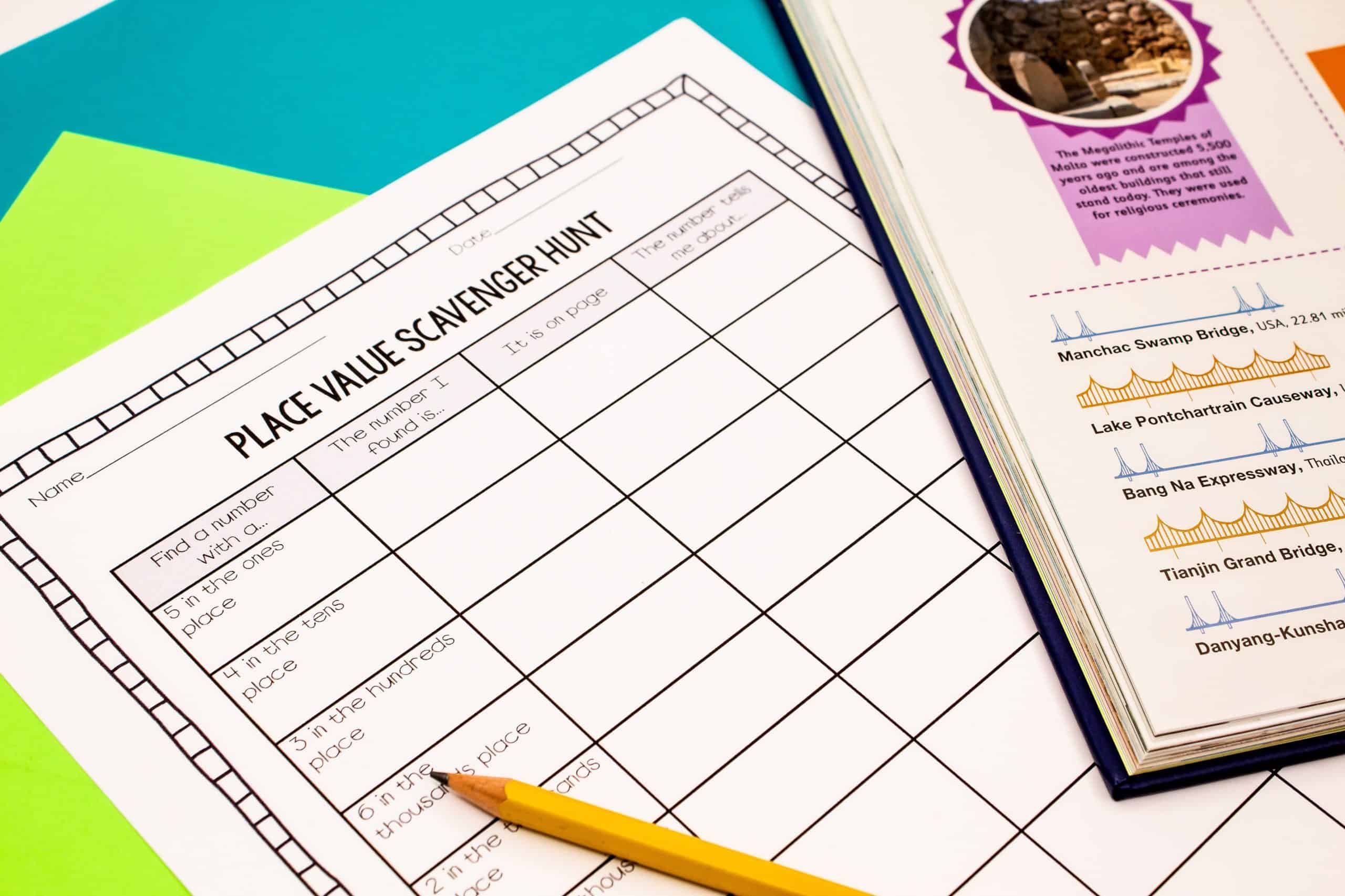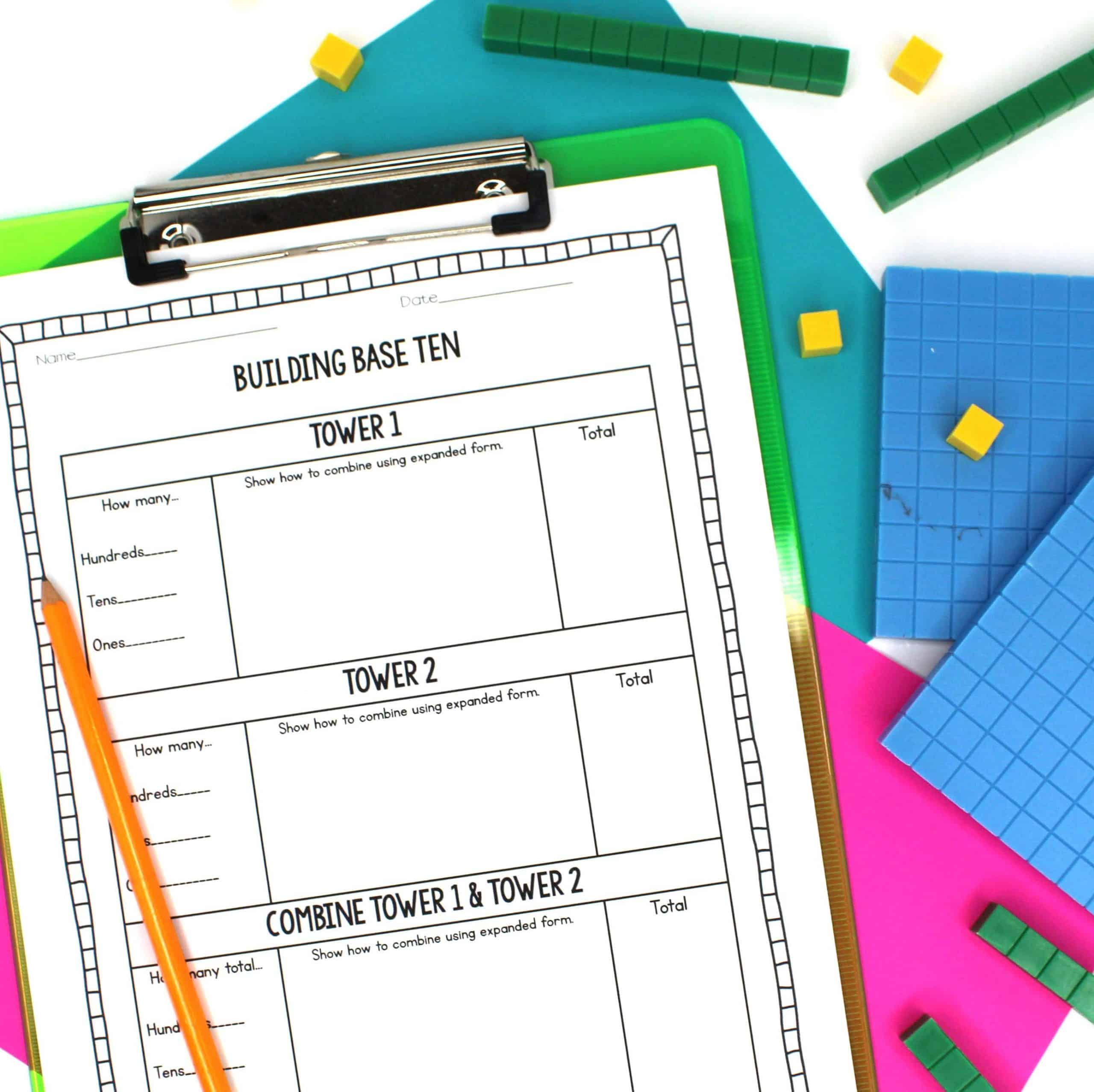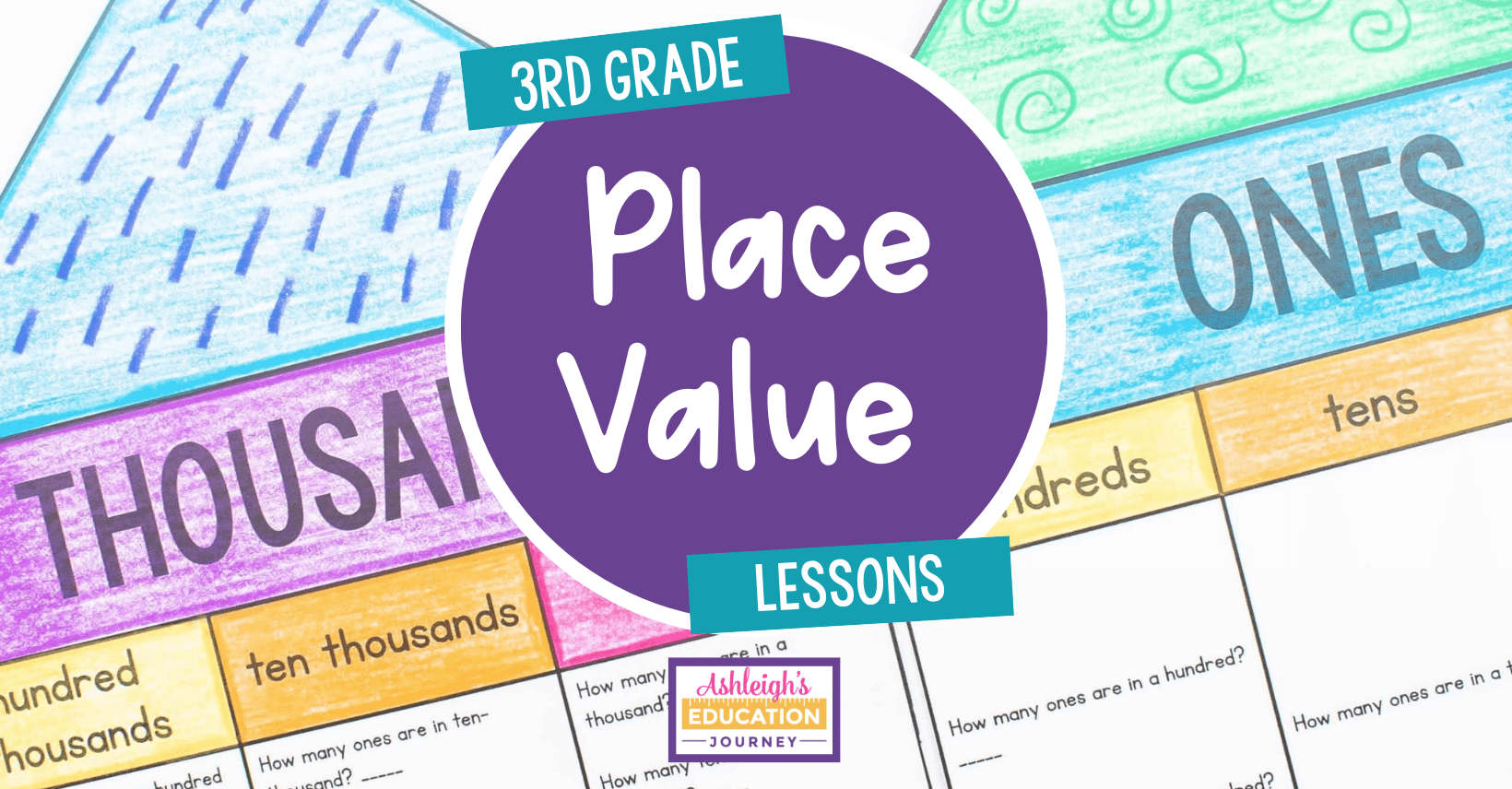
Place value for third graders is an important part of your math curriculum. In this post I’ve shared some of my favorite place value lessons from my place value unit. There are few math concepts more important than place value, because this is the unit that lays the foundation for all other math units. It can be tempting to rush through place value, especially if it isn’t explicitly stated in your standards. But, students benefit from slowing down. It allows them to develop a solid number sense before moving to more complex concepts.
I typically spend thee to four weeks on my 3rd Grade Place Value Unit. In the unit, there are 19 place value lessons and additional practice worksheets. Most of the lessons are problem based tasks and allow students to develop a conceptual understanding of place value. The tasks require students to problem solve and apply what they know about place value.
I’ve highlighted a few of my favorite lessons and activities for place value for third graders below. Hopefully, you’re able to find a few ideas for teaching place value to your students.
Place Value Houses
This lesson serves as a general introduction to place value. As the unit progresses, students will move into more problem solving and conceptual lessons. To prepare students for those lessons, this introduces common place value conventions and terminology. This task teaches that ten in any position makes a single unit in the next position.
Place Value Puzzles
Another fun practice activity are the place value puzzles. You can laminate and cut these puzzles and use them year after year! I like to store my cut out pieces is small sandwich bags and have students work with a partner to complete this activity. Students must match a number written in numeral form with a number written in expanded form and written form.
Building Numbers
In this place value for third graders lesson, students practice reading and writing numbers together using the base-ten chart. This is great for allowing students to develop a conceptual understanding of our base-ten system, as well as the size of a digit. This understanding is essential for place value for third graders.
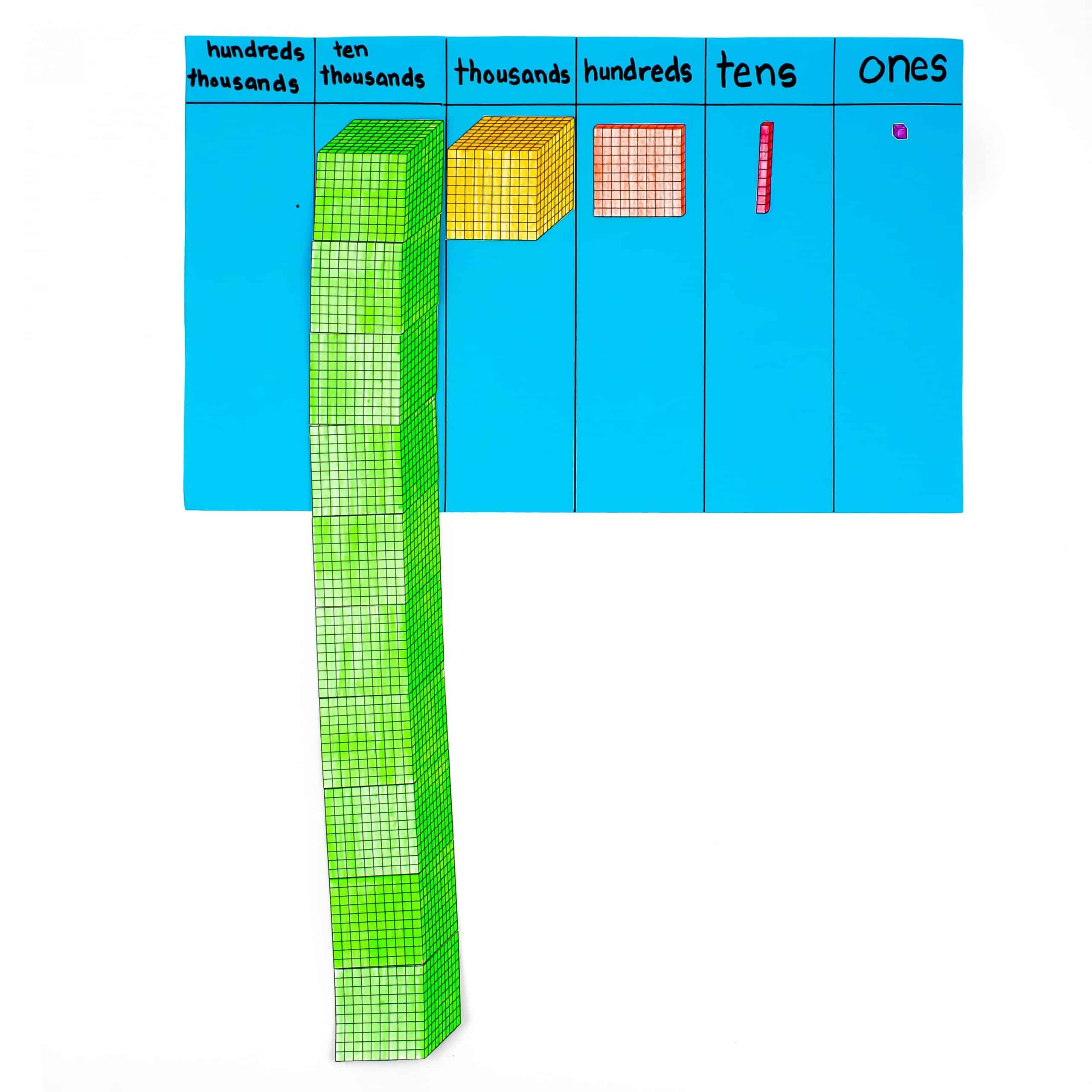
Naming Numbers
In the third grade version of the Naming Numbers activity, numbers don’t go past ten thousands place. You can use the bottom portion to introduce expanded form.

Place Value – I Spy
I love combining math and games. This is a great way to give students extra practice while I meet with small groups and/or individuals. This game reminds me a little of the game “Hangman”. Students should place this game with a partner. Player One should choose a 3-digit number (4-digit for a more advanced problem). The student should write the number down secretly on the back of a piece of paper and give Player Two a range of numbers to choose from (Ex: between 0 and 100 or between 100 and 1,000). Player Two should try to guess what the secret number is. Player One writes Player Two’s guess in the chart and indicates how many digits and the number of places that are correct in the guess. Students continue playing until the secret number is discovered, and then they switch roles.
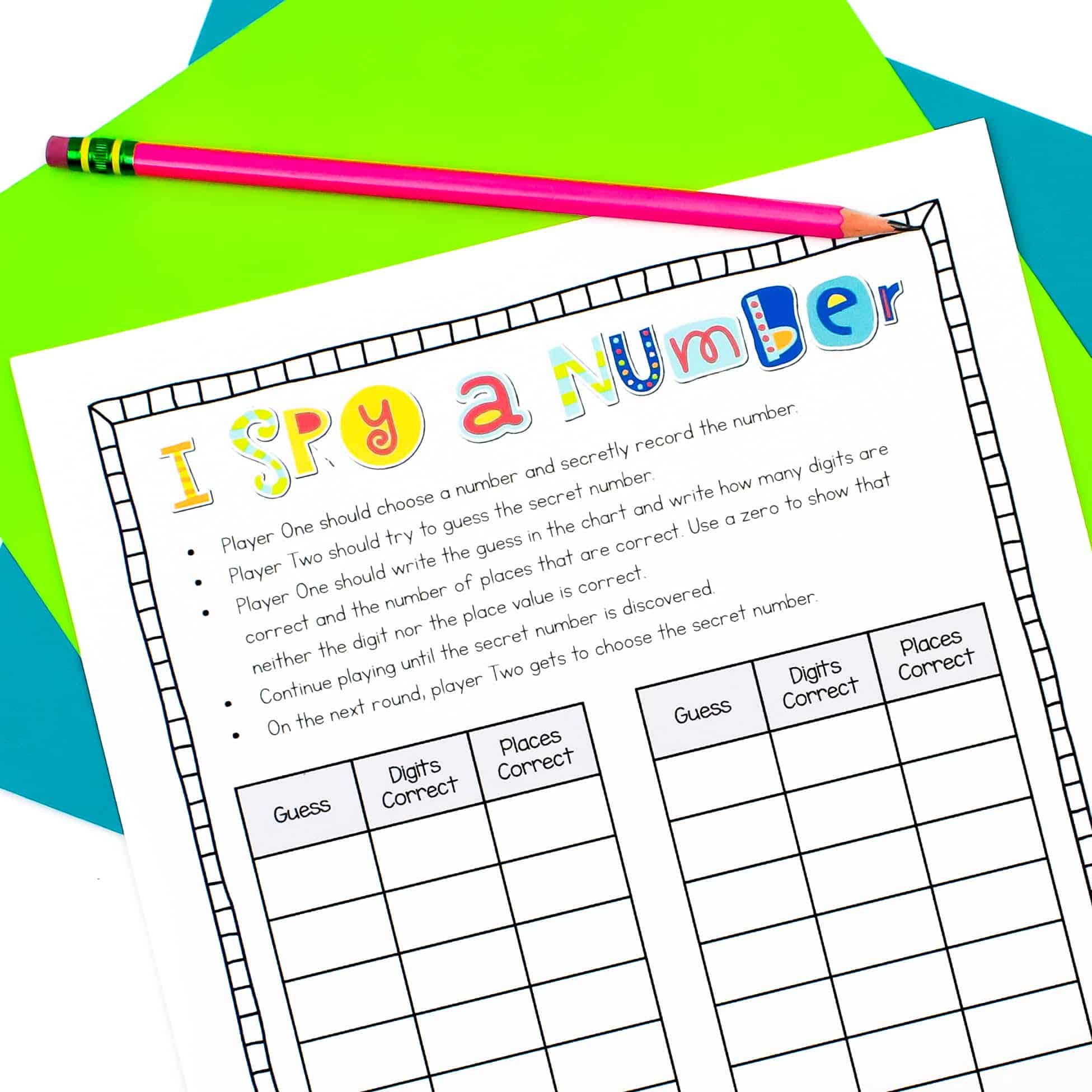
Place Value Mysteries
This activity allows students to work on low floor, high ceiling problems with a context of place value. For example, students place a digit, 1 through 9, in the boxes to create the smallest possible difference. Each digit can only be used once. In problems like this, there are multiple correct answers will allows you to practice math conversations as well as teach place value.
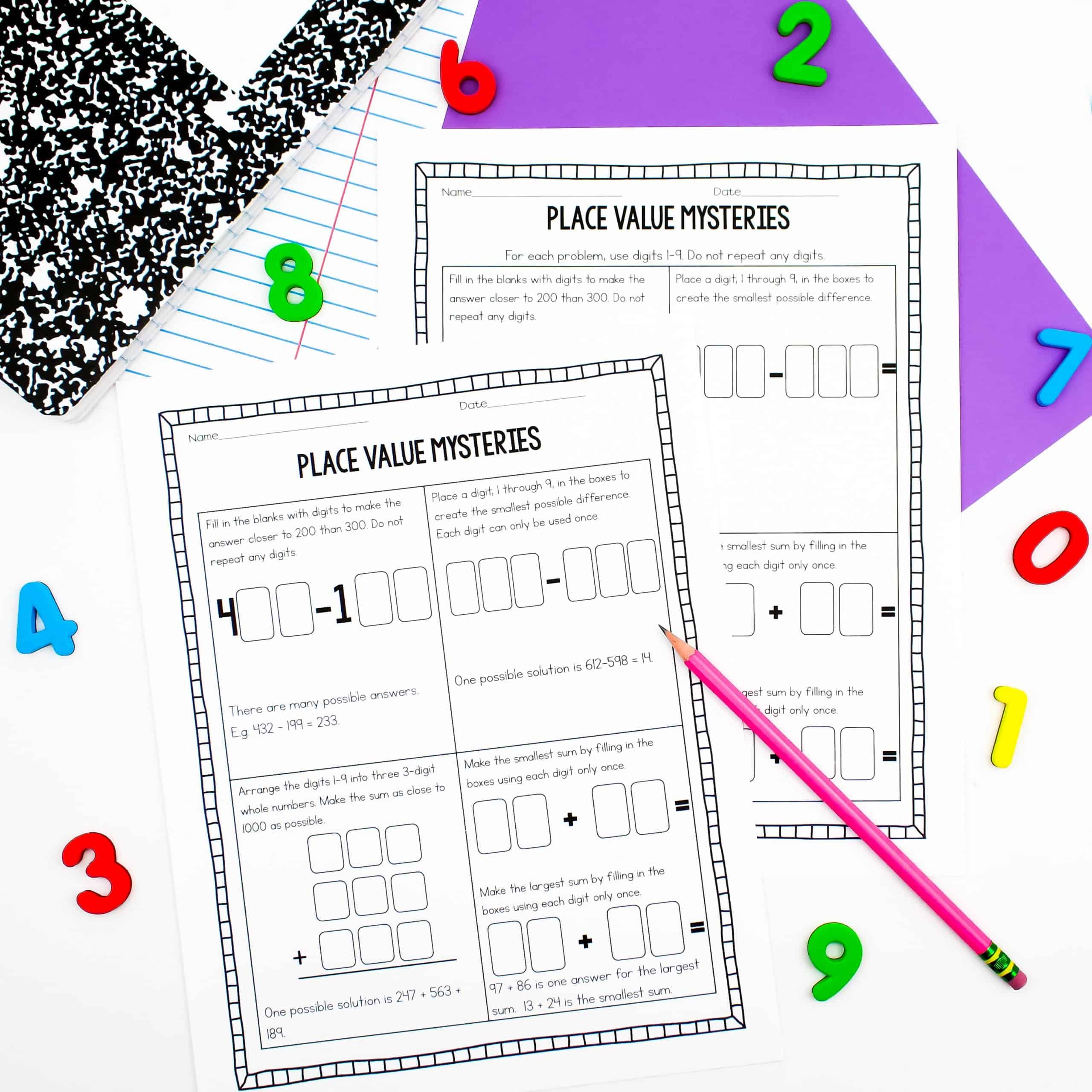
Value of Numbers
This is one of my favorite place value lessons! Students are given a series of numbers such as: 2 hundreds, 16 tens, 42 ones. They color code the base ten blocks to determine the total value of the numbers. This is an incredibly challenging, yet important, lesson for students. I even use this lesson when I am teaching fourth grade.
Number Duel
In the lesson Number Duel, students are given number cards that are written in different ways (47 tens and 19 ones). They should place the number cards face down in a stack. Students work with a partner and each take one card off the top of the stack. Students should determine the total value of the number, and whoever has the largest total gets to keep both cards. After all the cards have been played, whoever has the most the cards wins! This is another extremely rigorous lesson that can be used in 4th and even 5th grades.
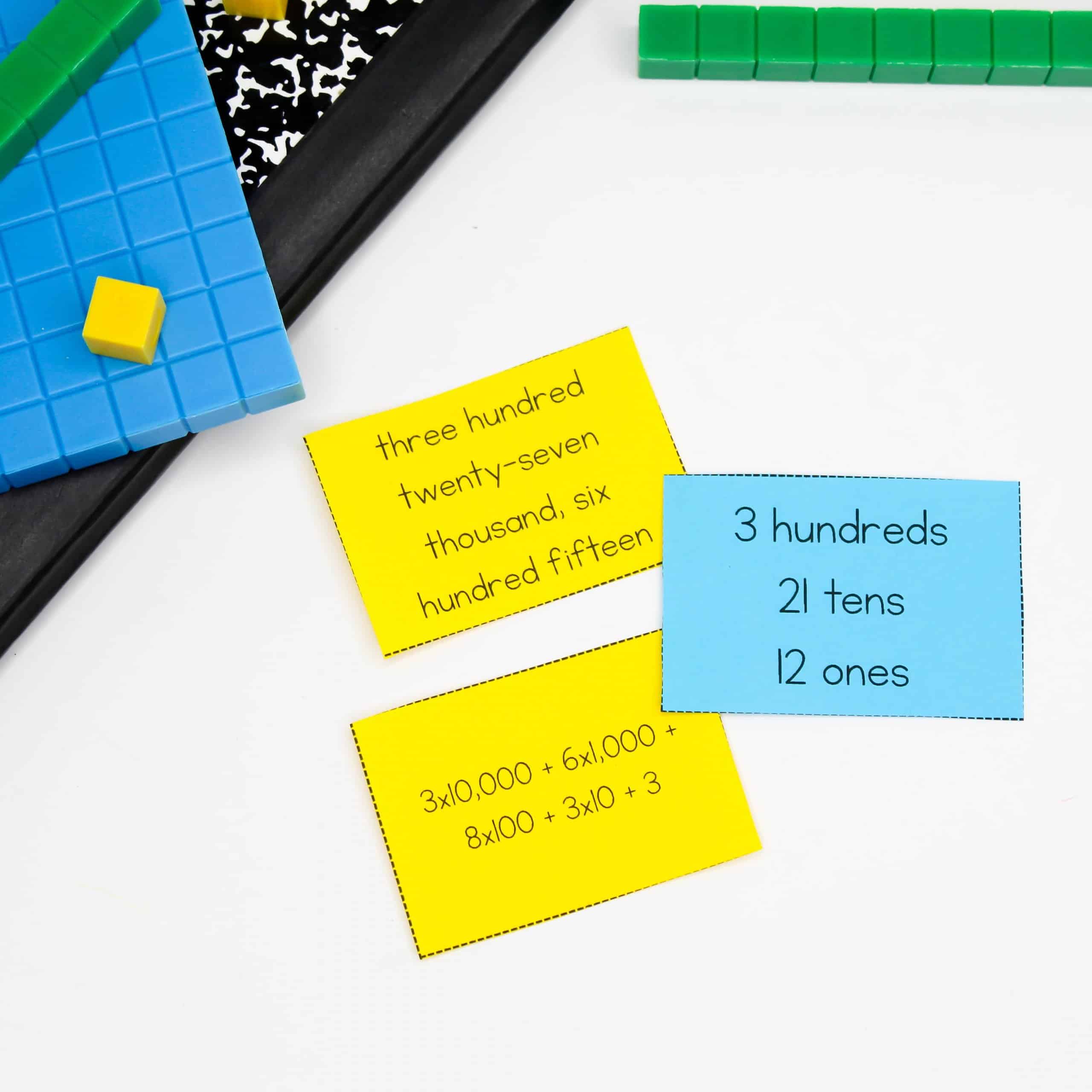
Place Value Number Lines
I love the conceptual nature of this place value number line lesson. In this activity, students are given a number line with a beginning and end point. Then there is a specific place indicated on the number line. Students should use number sense to estimate what number the dot is placed on. I love using this task to begin easing my way into rounding, as well as writing a good constructed response answer.
Building Numbers Game
I love the Building Numbers activity where students place with a partner and use a spinner to build numbers. The goal for each round is to be the partner with the greatest number. Games like this are the perfect addition to guided math activities!
Spin a Number
I absolutely LOVE this Spin a Number Game! Students are given a number to begin with as a starting place, and, they use a paper clip and pencil to create a spinner. On the first spin, students spin the amount of change add one, two, three, four, or five, OR subtract one, two, three, four, or five. On the second spin, students determine the place value that will change: ones, tens, hundreds, or thousands. For example, if a student started with 4,389 and spins +1 and thousands, the student would add a 1 to the digit in the thousands place. This can be quite challenging when students are required to regroup, but it’s great practice.
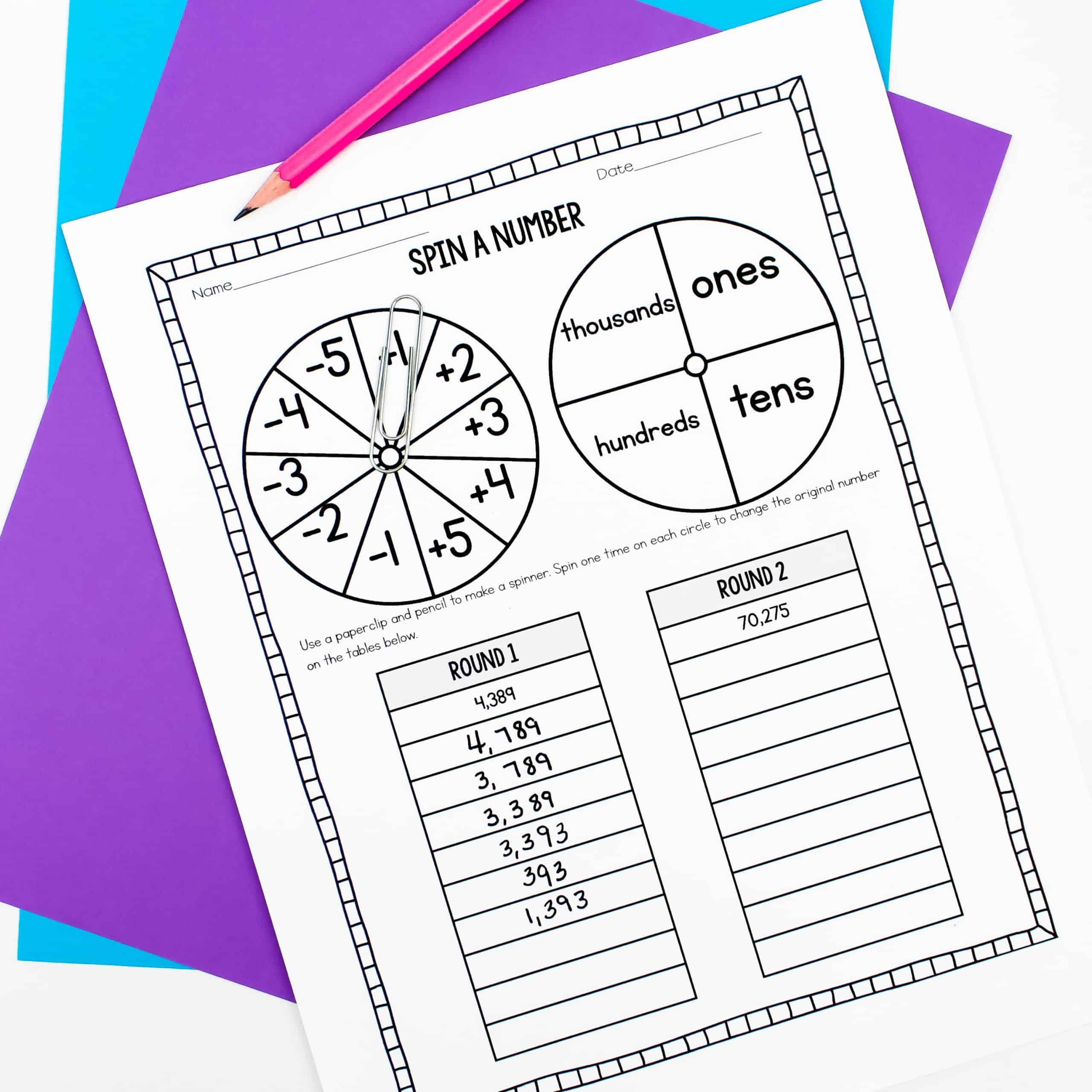
Place Value Riddles
This allows students to apply what they’ve learned with place value. It also builds student understanding of larger numbers and the value of numbers. For example, students may need to know how many tens are in 600.
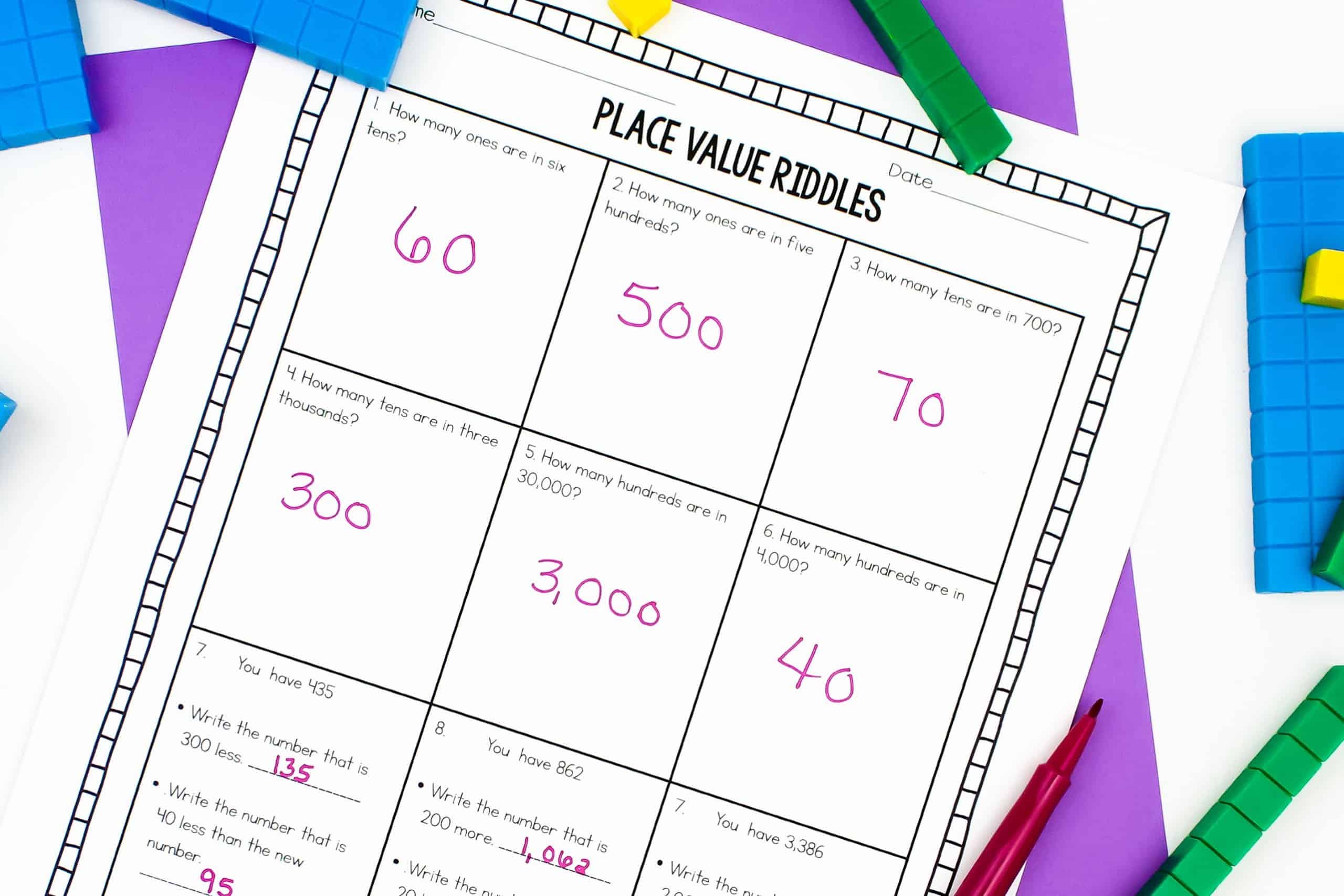
Place Value Scavenger Hunt
This is a great way to combine reading and math! I give each student a World Almanac, which I check out from our library. Students work in cooperative groups to complete the place value scavenger hunt. They look for numbers with the specified characteristics in their Almanacs. So, students may have to find a number with a nine in the thousands place or a digit with a value of 300. I make sure to have students pay attention to numbers that include decimal points, because they’re not quite ready for that extension!
Base Ten Towers
Break out the base-ten blocks! Let students get creative and built a “tower” using base-ten blocks. Then, after about five minutes, have students use the towers they built to building numbers.
Extras
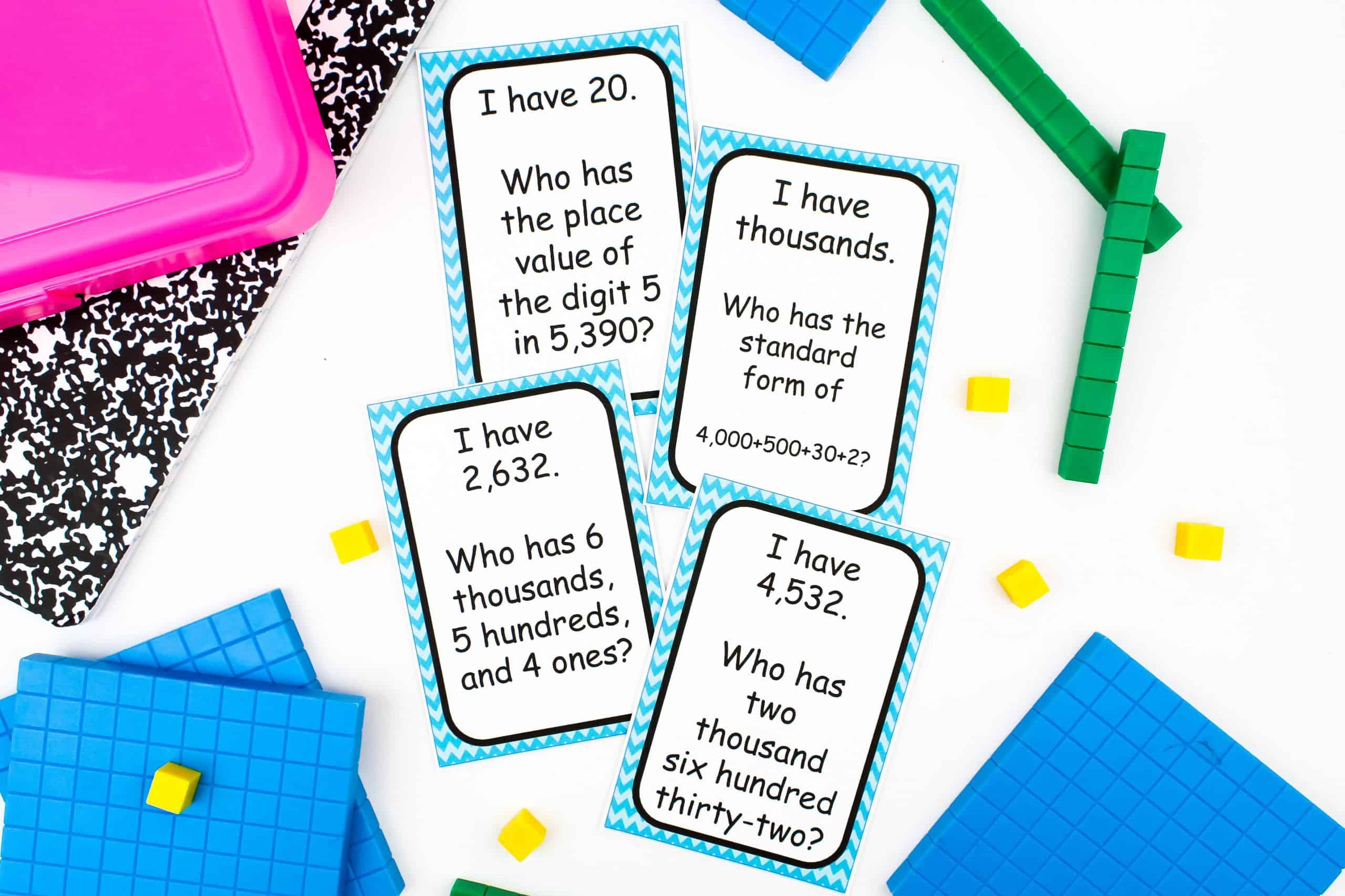
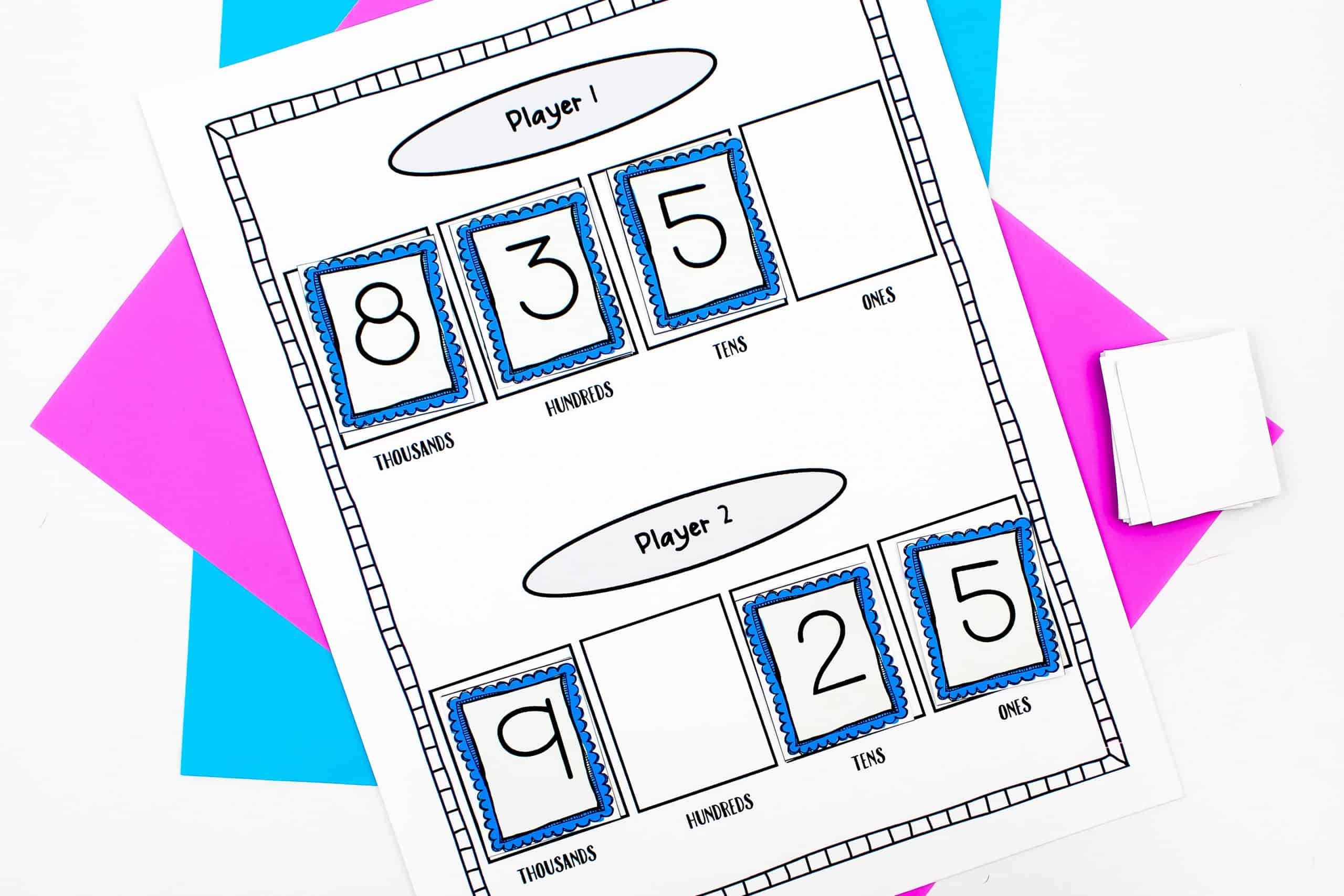
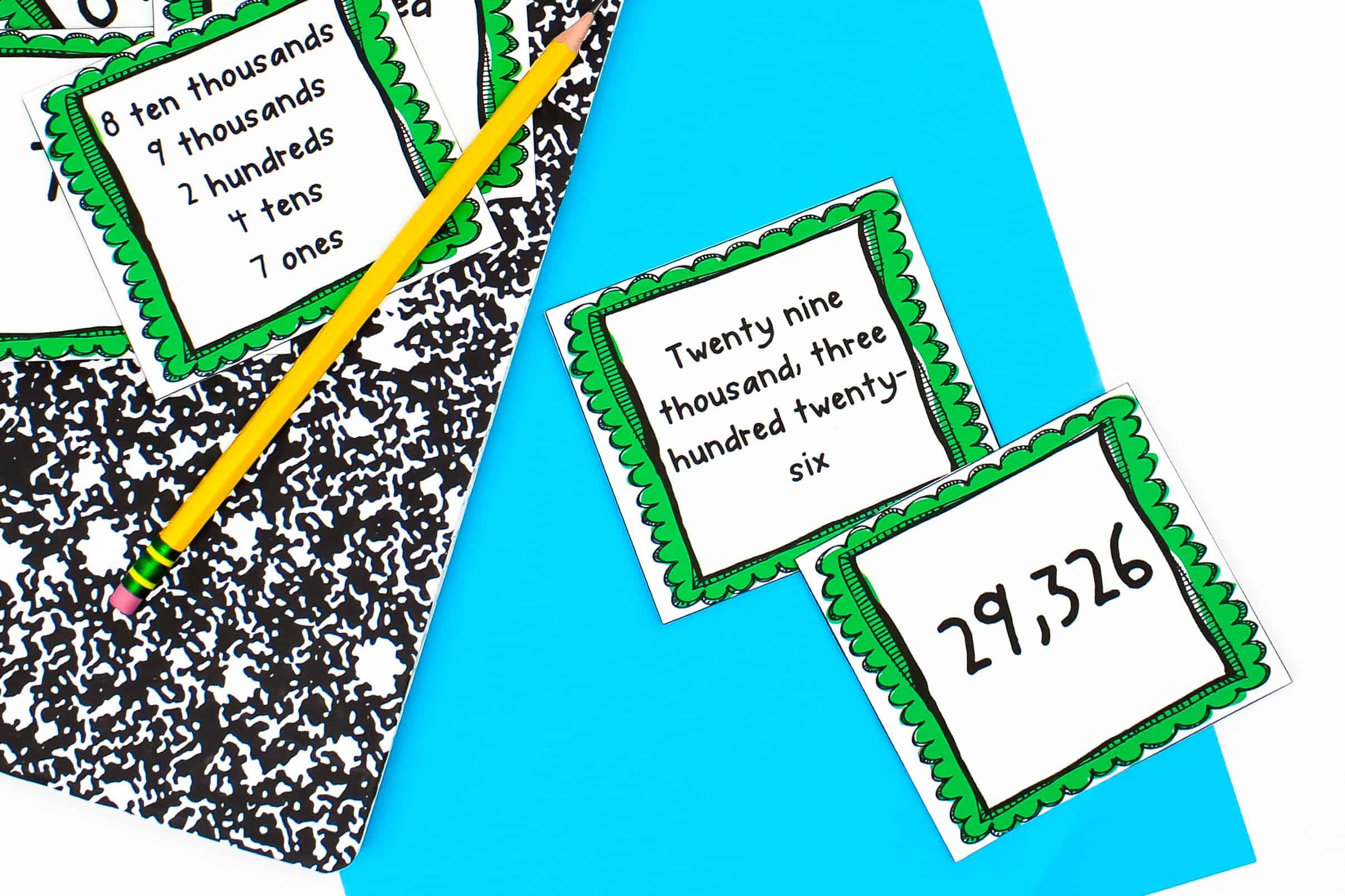
I have another place value activity that isn’t included in the unit. In the activity, students represent three digit numbers using a variety of combinations of base-ten blocks. There was the one obvious way for each number, but then students had to apply what they knew about regrouping to determine two other ways to show the number. This was very difficult for my students, but I feel that it was an important lesson in developing their number sense. I could see a huge improvement by the end of the week. You can download a copy of it here.
